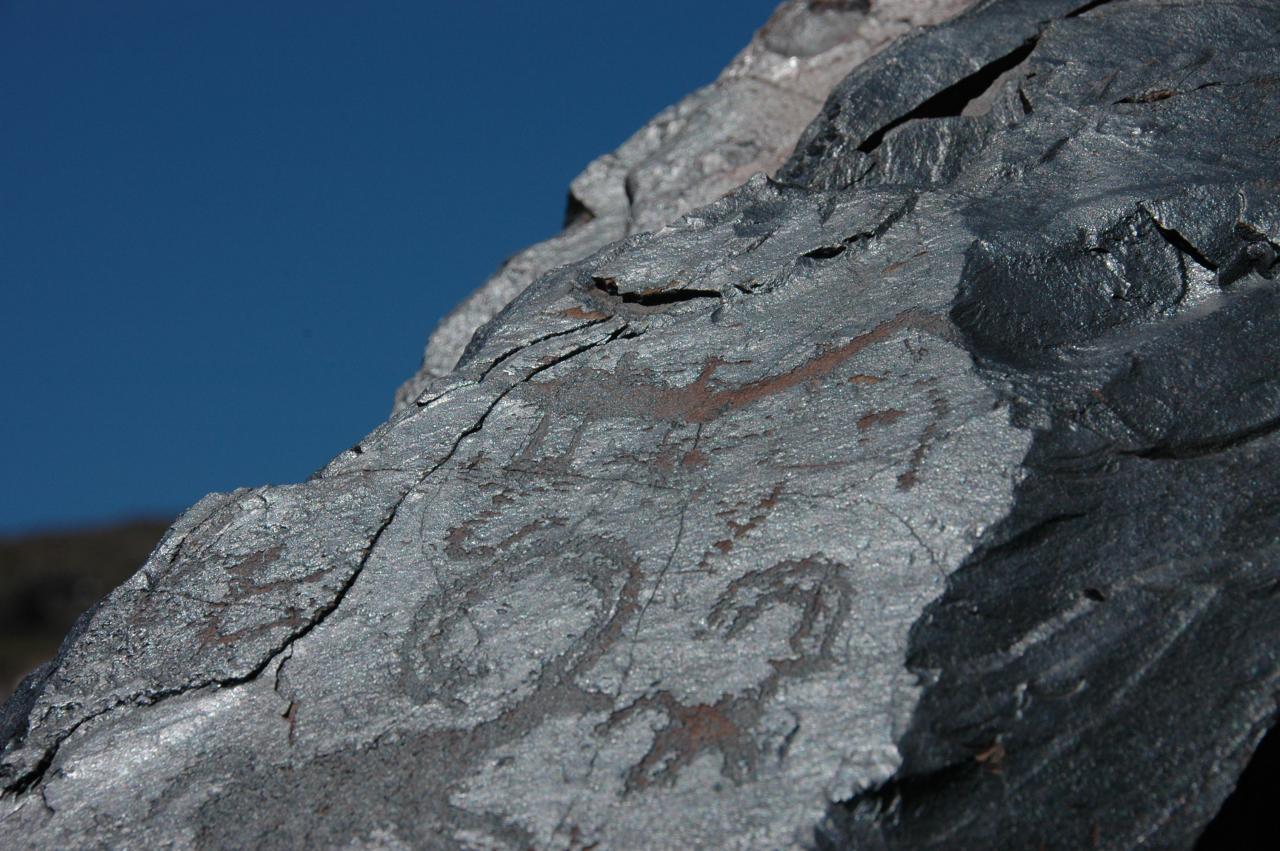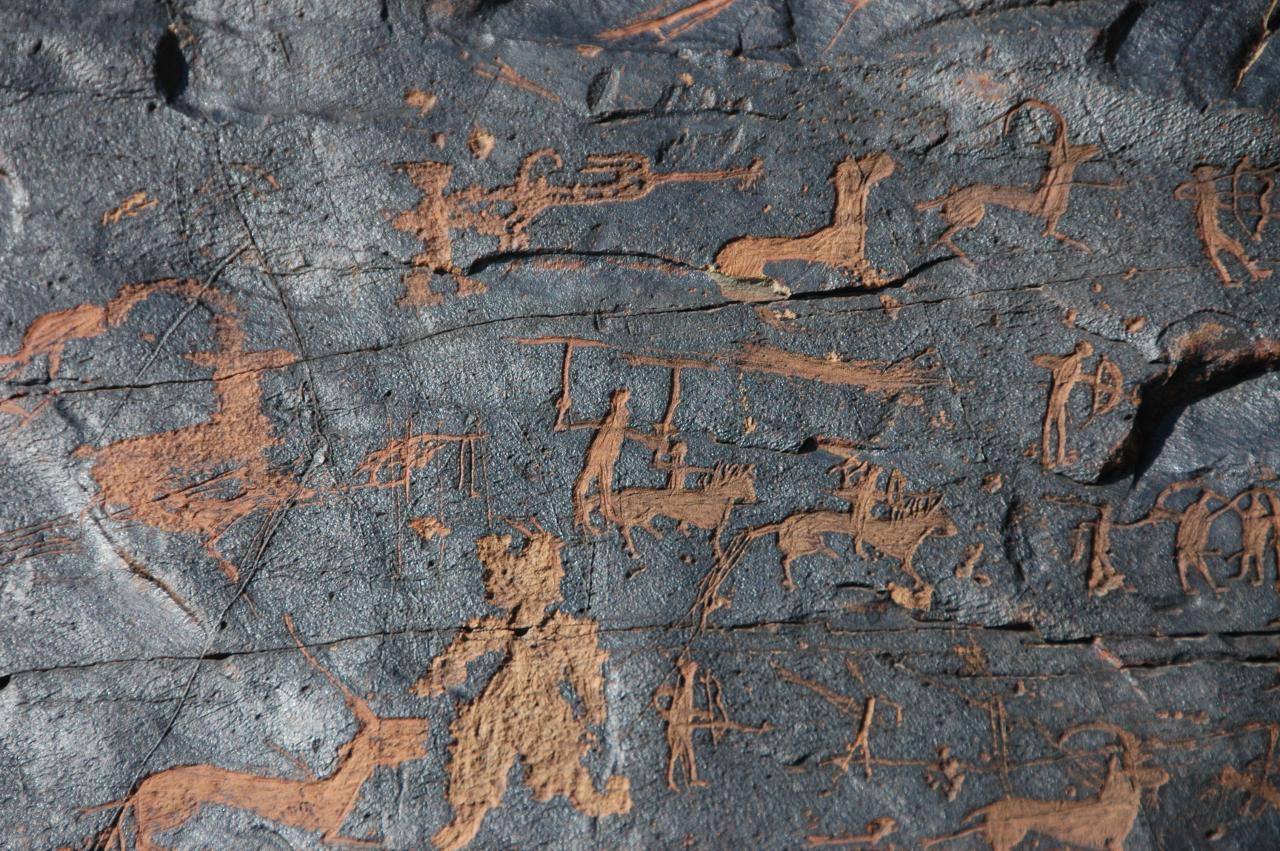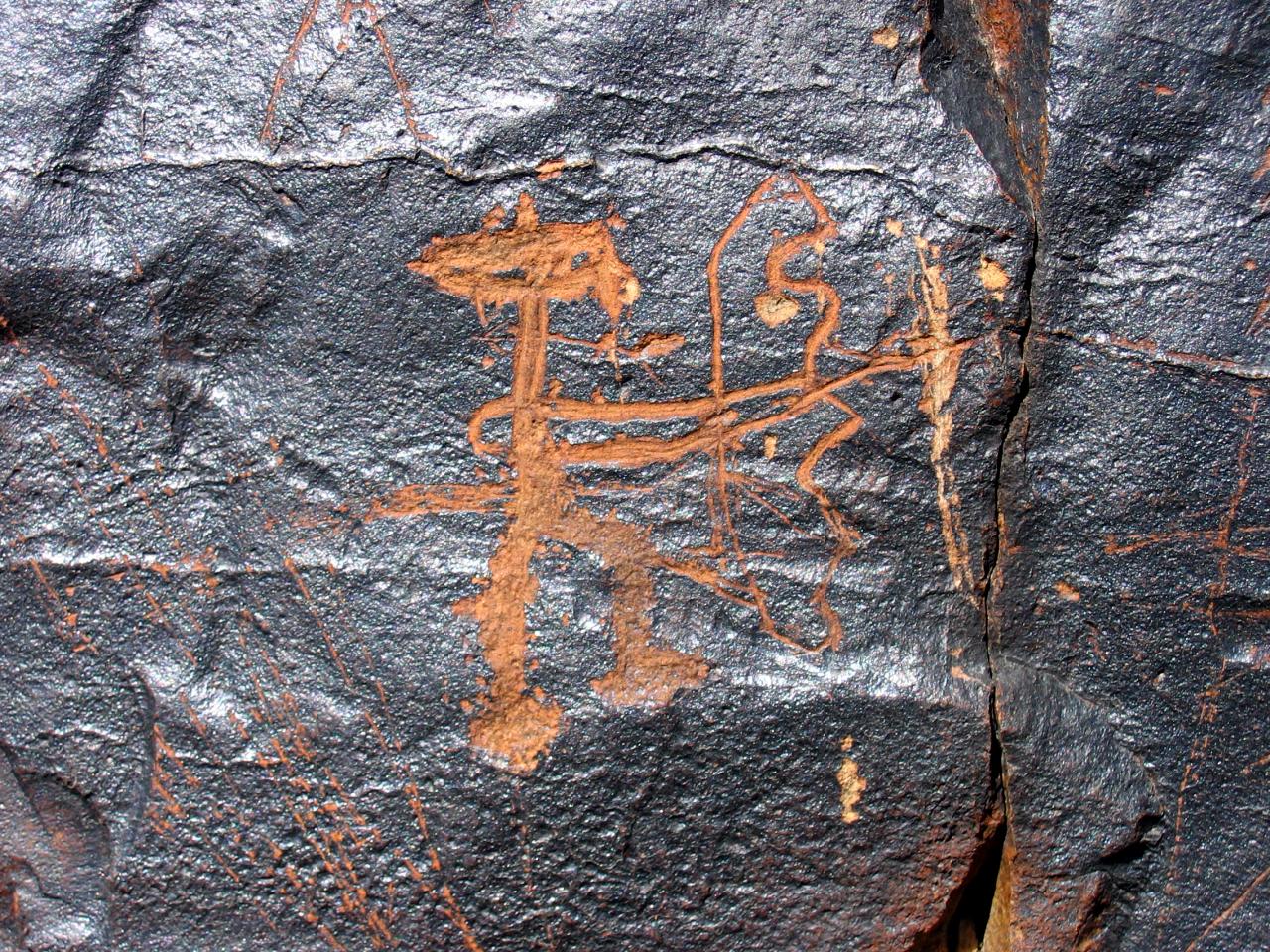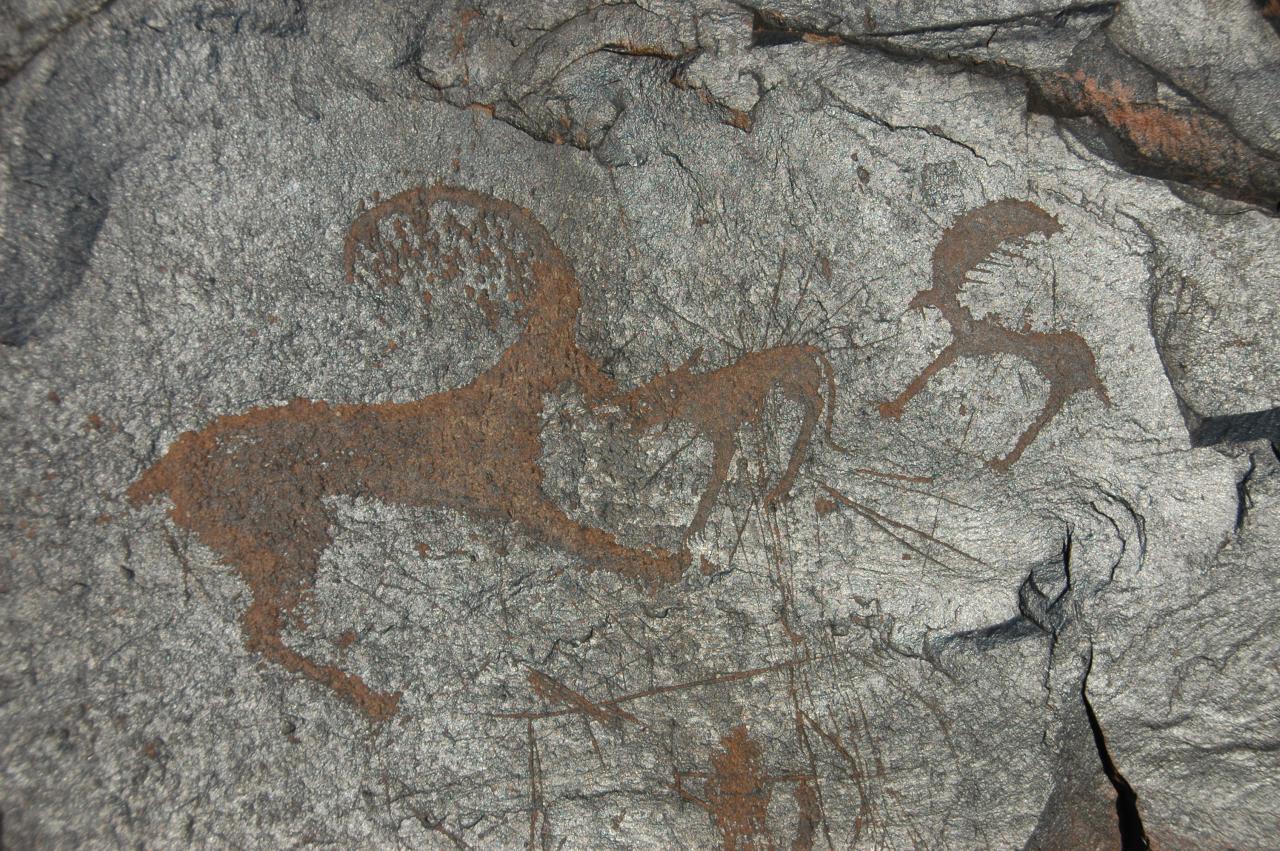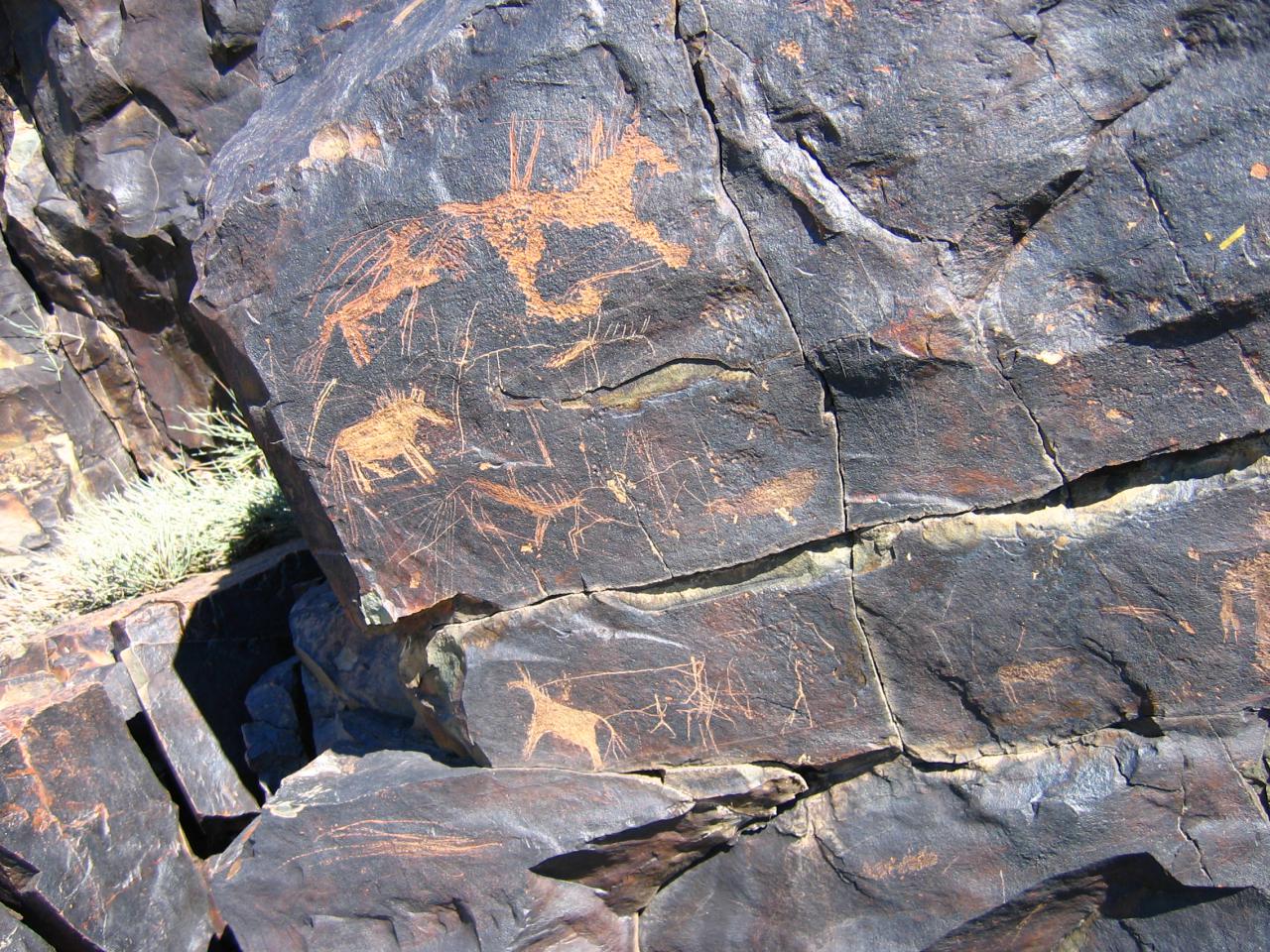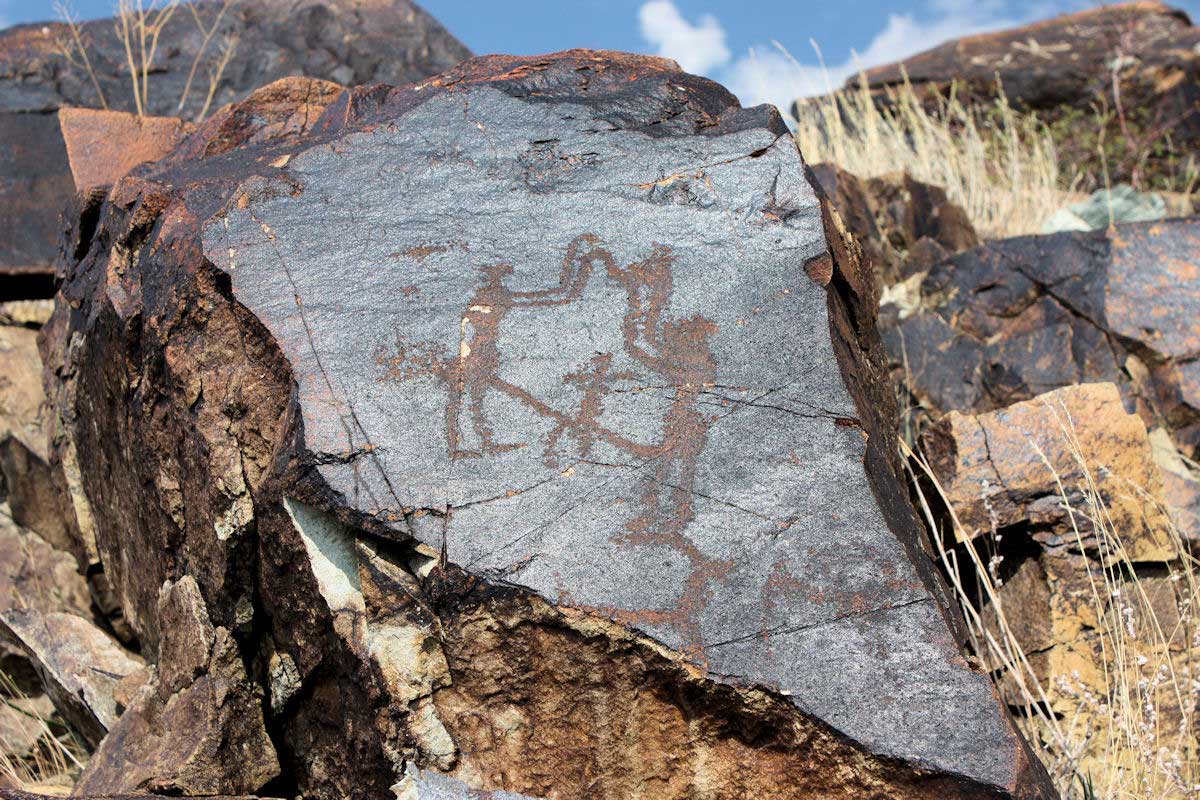The Eshkiolmes mountain range, a 30 km long western spur of the Dzungar Alatau system on the north of the Koksu river, houses numerous archaeological objects from Late Bronze to Middle Ages. The main group is located in the middle part of the valley: settlements, burials and petroglyphs of Late Bronze and Early Iron epochs belonging to the same cultural complex. The petroglyphs are the most remarkable remains: more than 4000 well preserved engravings spanning from the very beginning of the nomadic society to the Middle Ages. The specificity of the petroglyphs of Eshkiolmes, if compared with other large petroglyphs' sites, is the big variety of techniques, topics and styles, and their analogy with other artistic performances of the nomadic cultures, as castings, applications, bones' engravings, etc. Remarkable is also their detailed attention in the representation of clothes, arms and tools, obtained by the use of graffito techniques, so that the comparison of their representations with other archaeological findings permitted the dating of petroglyphs' groups and the individuation of stages in their execution. Being that the most important part of them corresponds to the Early Iron epoch, the petroglyphs of Eshkiolmes represent an exceptional testimony of arts, culture and way of life of the early nomads of Semirechie, and of the imitative tradition that followed during the I° millennium BC.
Petroglyphs of Eshkiolmes
- Continent: Asia
- Country: Kazakhstan
- Category: Other
- Added by: Ibrohimov Barzu Mahmadiyor o'g'li
- Source: http://silkadv.com/
- Date of adding: 2015-07-30 12:47:32
- 0
- 0
Description
Расположение на карте
Comments




